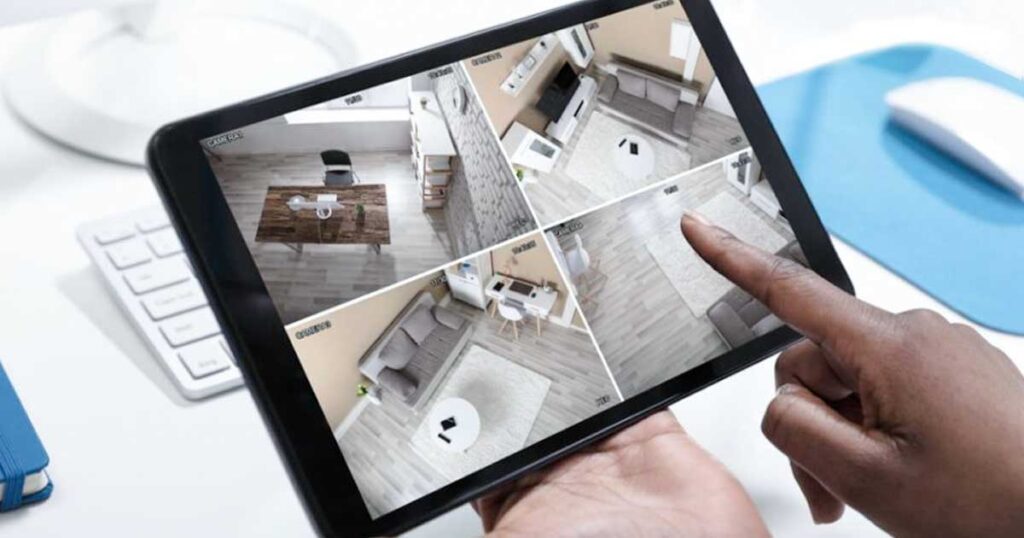The best security system features are the ones that best protect your home and loved ones. That being said, rapid advances in home security technology have enabled the top security system providers to offer more cutting-edge products and services than ever before.
What Are the Best Features to Include in a Security System?
For over 11 years, SafeWise experts have conducted independent research and testing to write unbiased, human reviews (not robots). Learn more.
By signing up, you agree to our Terms and Conditions and Privacy Policy.
Back to the basics
It wasn’t long ago that the most you could hope for from home security was a system that beeped when the door opened and sounded an alarm if you didn’t punch your code in quickly enough. You had a handful of magnetic sensors, miles of wire buried in your walls, and a control panel that offered only cryptic codes. The pinnacle of security technology was a system that could send a basic signal down the phone lines when an emergency occurred.
Some home security features will always be essential. Sensors and alarms are still must-have basics, and the heart of any home security system is still a control panel that can be connected to a remote alarm monitoring service.
However, the past few years have given us a number of innovative and compelling features that greatly extend the capabilities of a home security system.
Wireless security technology
Some of the biggest advances that benefit home security are the developments in reliable and data-rich wireless technology. The same push that allowed smartphones and tablets to free us from desk-bound PCs now allows for home security installations without the drilling, as well as remote monitoring that doesn’t depend on telephone lines. Wireless cameras and sensors are now so powerful and dependable that no major security provider lacks a wireless package.
It’s not simply the sensors that have gone wireless, but the lifeline connection between the home and the central monitoring station. The most crucial and vulnerable part of a classic alarm system was the telephone line. If an intruder knew to cut the wire, they could render the entire system useless. With GSM technology, modern security systems are secure with a cellular backup, which also suits the many homeowners who have replaced their landlines with mobile phones or VoIP.
Improved camera technology
Likewise, parallel advances in video and imaging technology gave us mobile miniature megapixels in our webcams and smartphones, but also dramatically increased the role that video surveillance can play among home security system features.
Instead of the grainy black-and-white “slideshows” of previous-generation security cameras, we now have vivid full-color HD camera feeds, tucked into devices small enough to blend into our home decor or completely disappear from view. High-capacity DVRs or NVRs let us record and playback gigabytes of essential camera feed footage, and remote controls lets us pan and zoom individual cameras to see exactly what’s going on.
Home automation technology
One of the biggest areas of innovation is home automation technology. Combining two-way wireless communication with mobile app development, home automation systems provide unprecedented options to not simply see what’s happening in our homes, but also to control it from anywhere in the world.
We can monitor all sorts of real-time information about our system from our smartphones, and some even give us the option to see the feed from our security system’s cameras right on our devices. Other benefits of home automation include using that same app to turn your lights on and off, adjust your thermostat, lock and unlock doors, and, of course, arm and disarm your security system.
Learn more about the possibilities in our room-by-room guide to home automation.
Updates to basic technology
Many simple and fundamental home security components have been upgraded as well. The basic door and window sensors are more accurate and reliable than ever before, and there are more types of sensors that can be integrated into a home security system. This includes tamper-sensitive sensors to tell you if a window breaks or someone tries to access your control panel, temperature, humidity, and water sensors to alert you of fire and flood conditions, and sophisticated pet-friendly motion detectors that can tell the difference between an intruder and the family dog.
Even the humble smoke detector has benefitted from recent advances. Modern sensors are based on state-of-the-art ionization and photoelectric technology, and utilize broadband two-way communication for detailed up-to-the minute analysis of your home’s air. Whereas the smoke detectors of years past were most likely to let you know when your toast was overdone, today’s security systems can use temperature sensors to incorporate heat thresholds, and carbon dioxide sensors to monitor air quality.
Protecting against intrusion and fire is still the central goal of any home security system, but the increased technological capabilities have considerably broadened the scope. With wearable panic buttons, emergency response is one touch away for the elderly and disabled. With doorbell cameras and remote door locks, you no longer have to be home when the housekeeper comes to clean.
Compare the best home security systems
Recent Articles



